Located about 3 hours south of Lima, Paracas is the sleepy beach town famous for the Paracas National Reserve and Isla Ballestas. It is also the first of many stops along Peru’s southern circuit that goes down towards Arequipa. Originally, our reason to come here was purely to go kitesurfing. That never ended up materializing because winter mornings in Peru is cold, and there is so much more to do in this part of Peru.
Having spent a few days in Lima, Paracas offered the antithesis to Lima’s hustle and bustle. It is a quiet, sleepy, and scenic town on Peru’s coastline. At night, we would hardly see any people and during the day, the occasional tour bus. From talking to some of the locals, Paracas is less frequented by tourists and more so of a summer getaway destination for wealthy Limeños. Having visited in September, our hotel was basically empty!
Getting there
There are numerous ways to get to Paracas. It’s about 3-4 hours drive from Lima and no flights are available.
Cruz Del Sur Bus
There are direct buses from Lima to Paracas, and numerous bus companies service this route. We ended up with Cruz Del Sur which is one of the bigger companies in Peru. South American bus terminals really impress me. Not only are there buses cheap, new, and comfortable, but this specific bus terminal even had a free baggage check service before boarding the bus. The bus was comfortable with far reclining seats, and TVs in each seat. Note that the movies they play in Peru are Hollywood movies, dubbed in Spanish only, with English or Spanish subtitles.
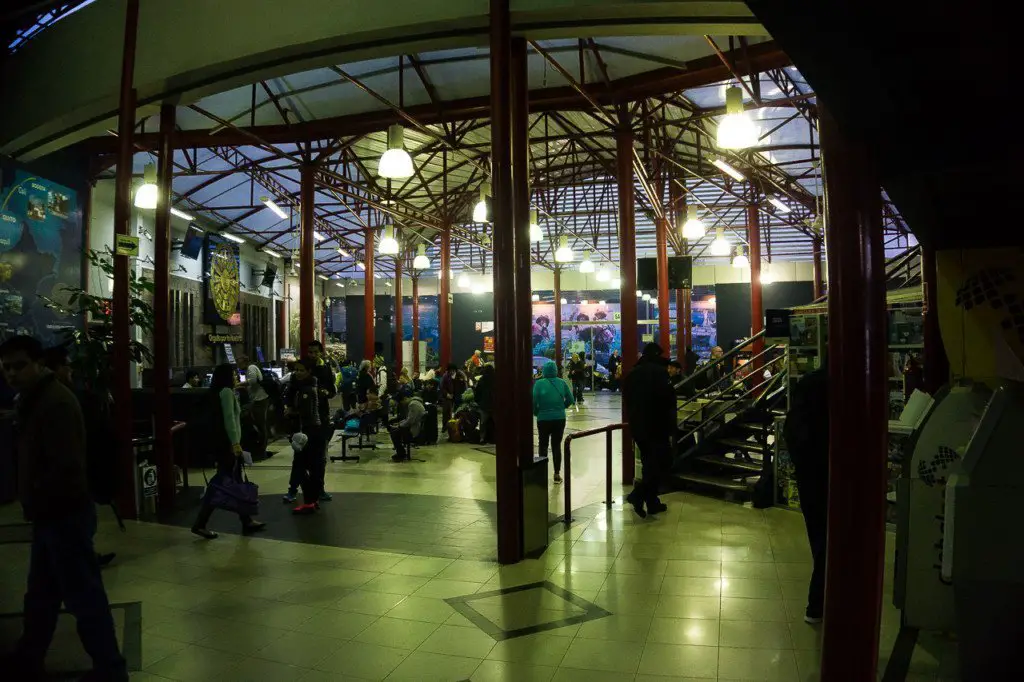
As soon as we left the sprawling metropolis of Lima, the outskirts and rural areas provided quite the stark contrast. Turns out that this region of Peru is just one giant desert! As soon as we left Lima, all I saw were giant mounds of rocky sand. They weren’t the rolling sand dunes of the Sahara (that only exists around Huacachina), but it reminded me of the desert area in the south of Namibia. Total cost for a 1 way ticket was around 30 soles (~$9)
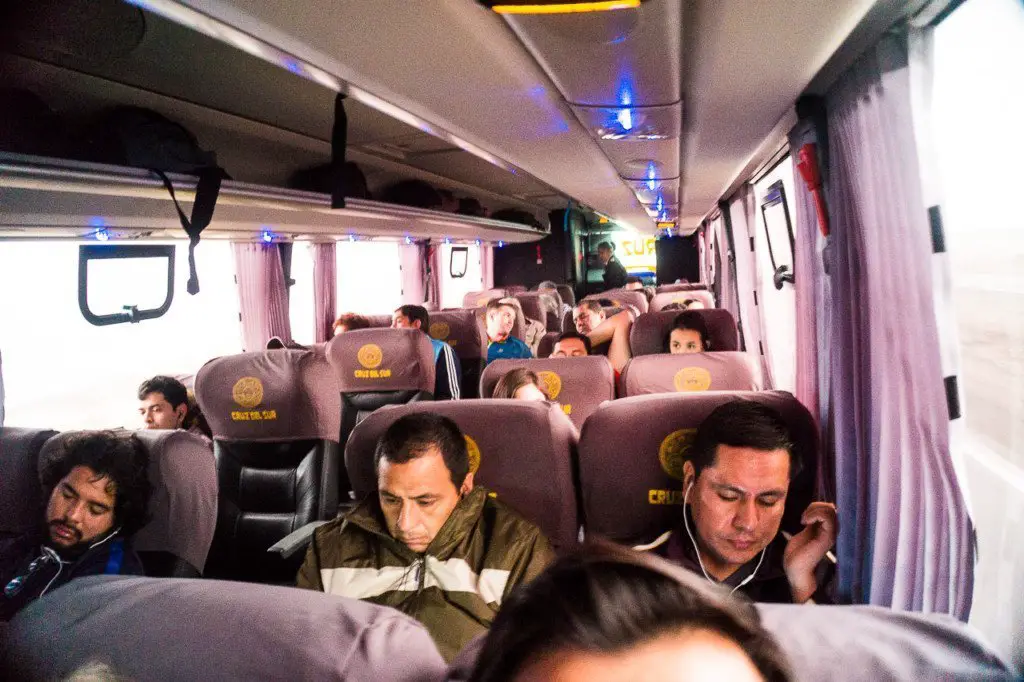
Uber
Although I caught the bus, I was very tempted with Uber. I’m not sure if any driver would have consented to going all the way down there but I plugged in my destination just out of curiosity and Uber estimated 300 soles for the trip (~$90) which for a 3 hour, 250km journey seems very fair!
Where to stay in Paracas
We ended up staying at the Hotel Paracas, part of the Luxury collection of 80 hotels all around the world. It’s located just a few meters from the Pacific Ocean, and also close to the town center (although there is not much there). This was our splurge hotel for the trip, and by splurge we paid $150/night for a 5 star hotel, and also one of the best hotels we’ve ever stayed at! There’s 150 villas, 2 large swimming pools, one outdoor hot tub, numerous top notch restaurants, and its own private dock to take hotel guests to the Isla Ballestas.
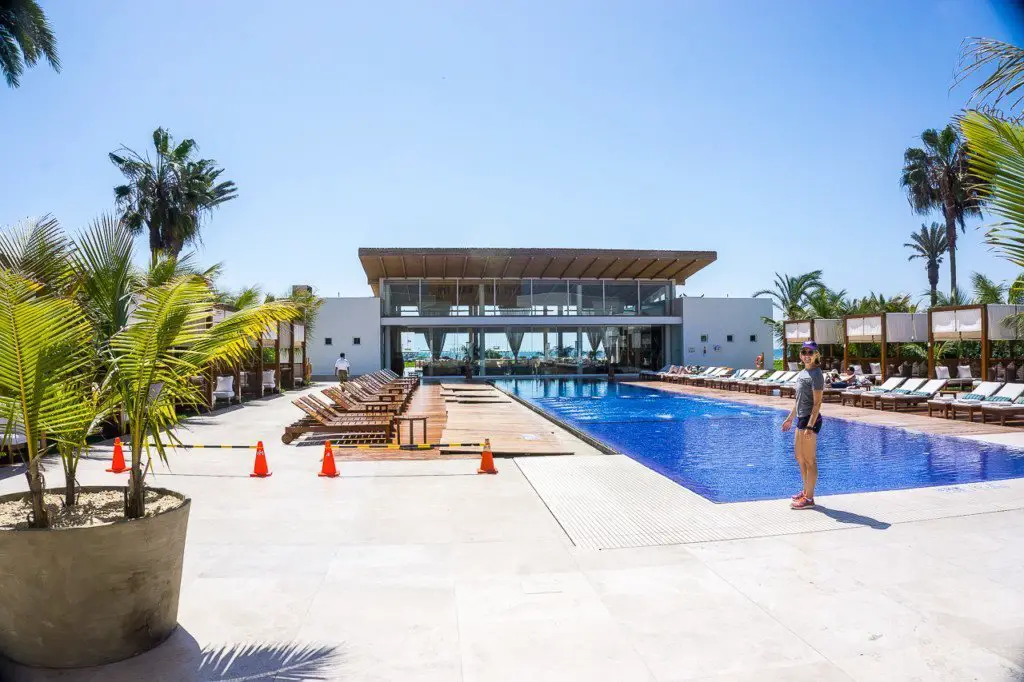
In particular, the outdoor hottub was a thing of beauty. It’s opened 24 hours, and there’s nothing like jumping into a nice hot tub at night while it’s cold outside and having clear views of the stars!
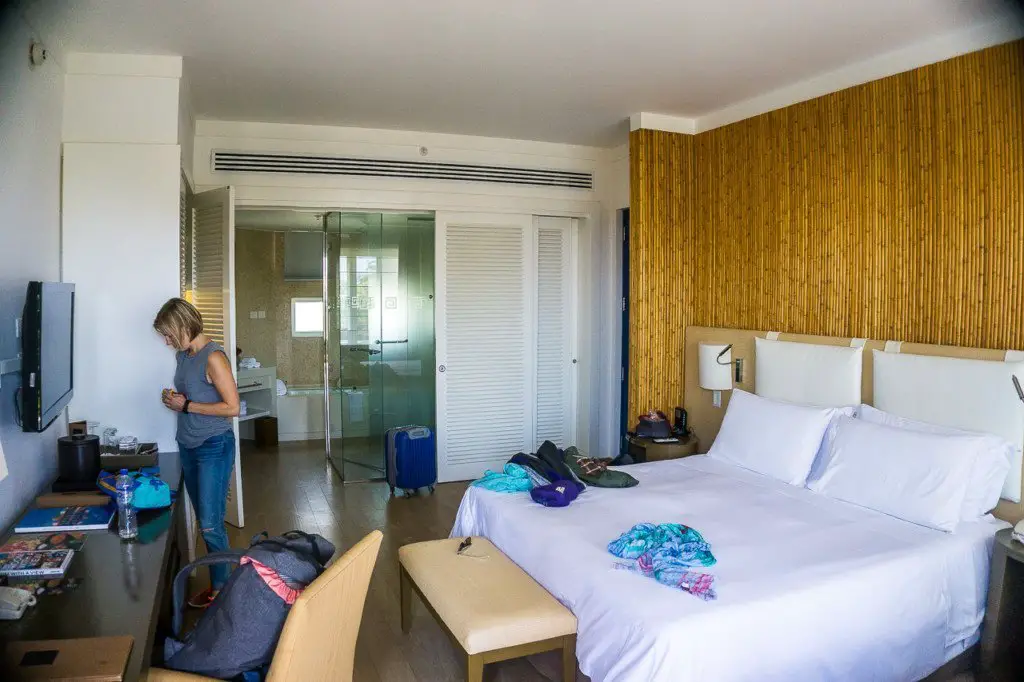
The rooms are also a treat. Fully equipped with a Jacuzzi, a terrace overlooking the ocean (or garden), and Starwood’s signature heavenly beds, it was hard to leave this place.

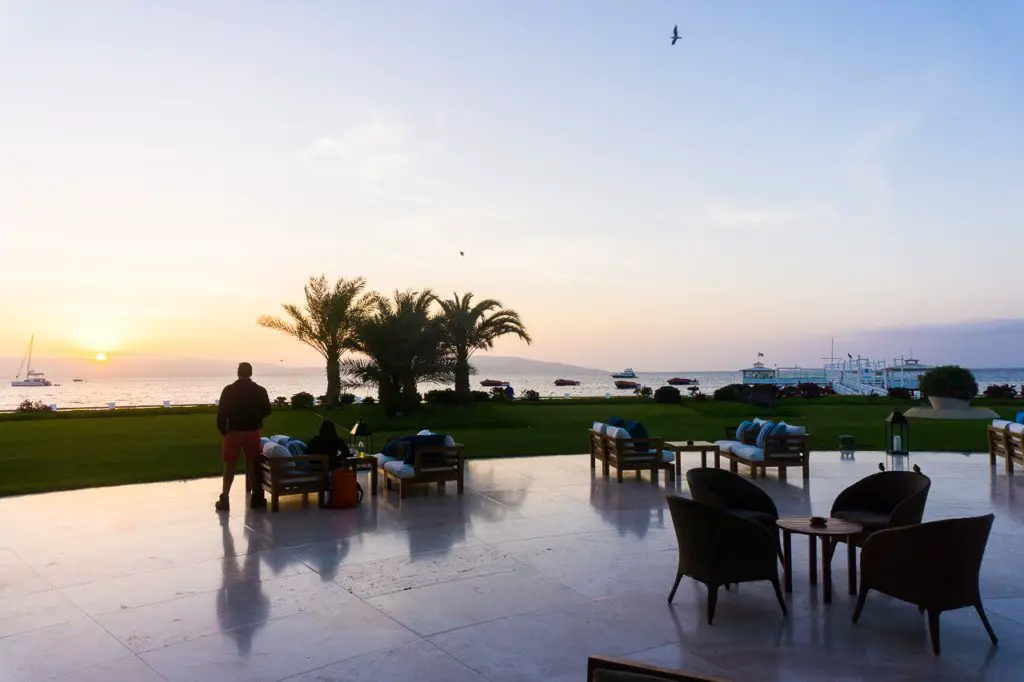
What to do in Paracas
Paracas National Reserve
A trip to Paracas is not complete without a visit to the Paracas National Reserve. Located 10 minutes outside of Paracas by car, it can be done in a few hours. We checked in to our hotel around noon, and booked a tour by quad-bike for the same afternoon.
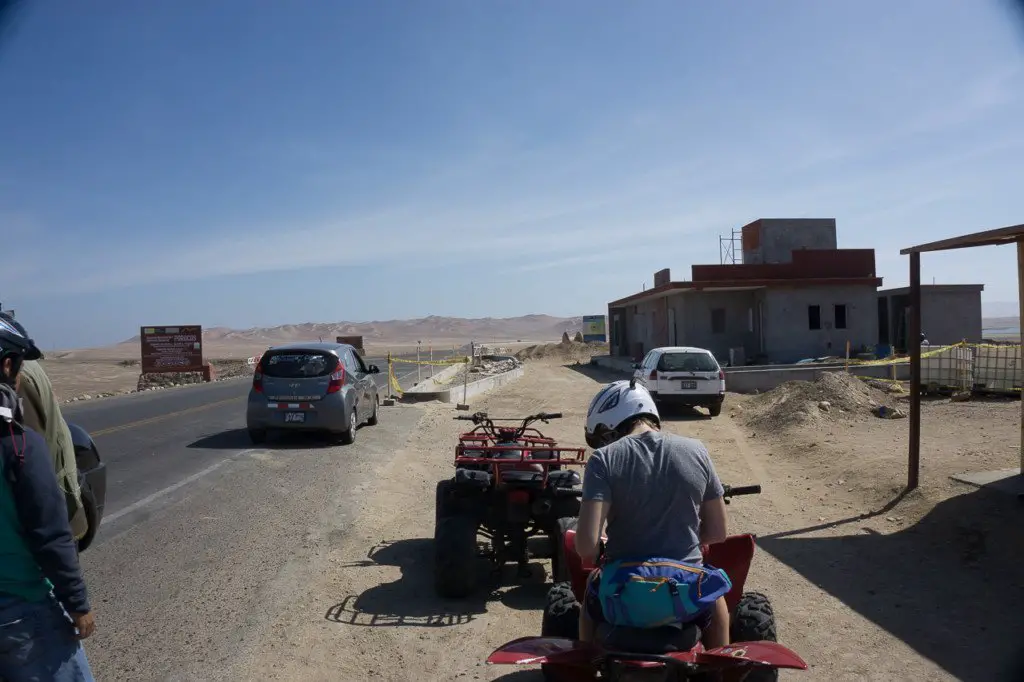
Paracas National Reserve was created in 1975, as a way to preserve the marine coastal life that spans miles of coastal water. It was also created to protect the local heritage and is home to hundreds of species of birds. Local fisherman regularly fish the waters surrounding the reserve but the Government has completely outlawed commercial fishing boats as part of their preservation efforts.
For 120 soles (~$35), I was able to book a quad bike tour of the Paracas National Reserve. Very fair price especially compared to the exhorbant prices I paid in Namibia’s Swakopmund for a similar quad bike tour. And I love to quad bike.
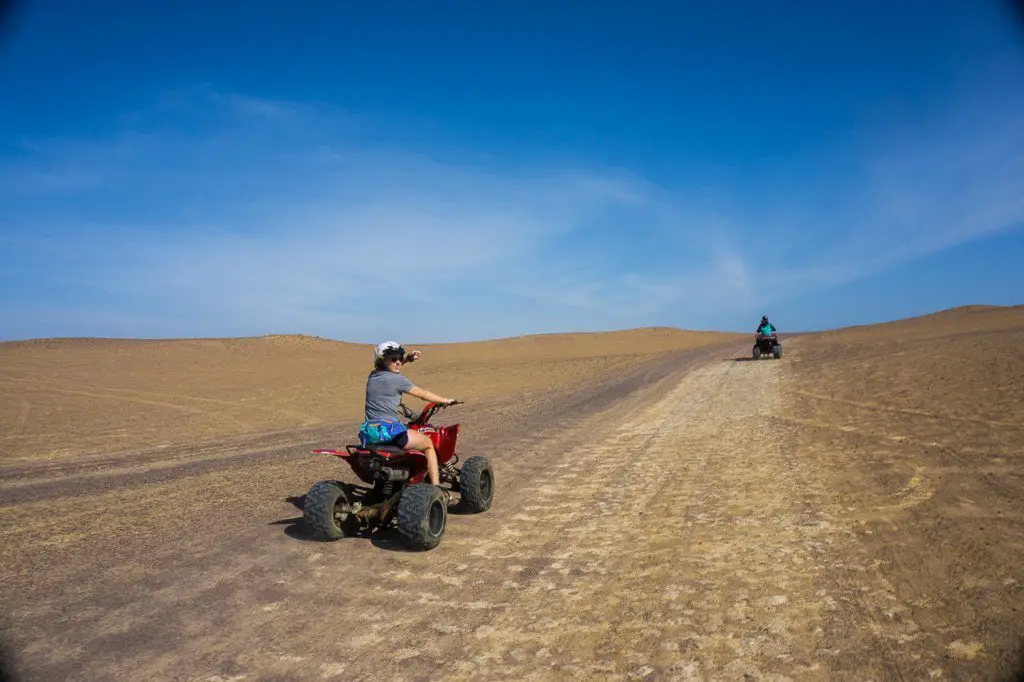
As we left the town of Paracas and into the National Park, I couldn’t help but admire the vast, barren, and stunning landscape that laid in front of me. After paying 10 soles to enter the park, we made our first stop at the Paracas museum. This museum gave the viewers a good understanding of the conservation efforts the Government has taken on, and the diversity of wildlife within the park. Apparently the local fisherman only know of 50 fish species in the ocean, but there are three times that many. The museum really painted the underwater landscape as some sort of aquarium paradise. Sadly, there’s no scuba diving in these parts but I reckon if that ever came around, it would be a stunning destination.
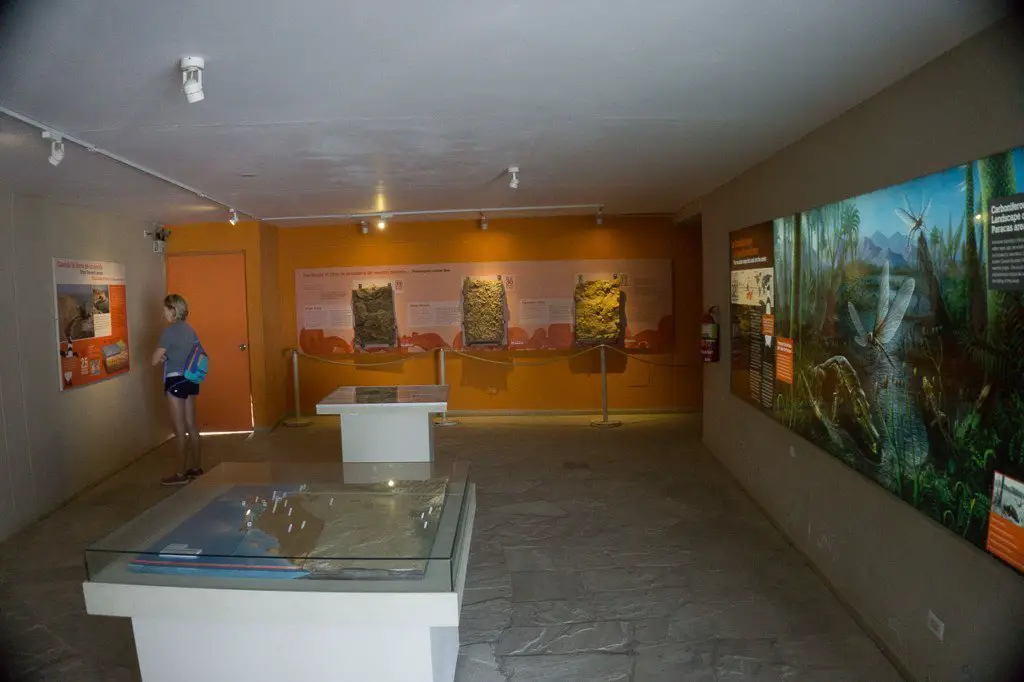
After the museum, we quad-biked to the top of a hill to admire our surroundings and take some pictures. It’s amazing. Seeing the Atlantic crashing into the dramatic mountains of the reserve is something else.

After taking plenty of selfies, we proceeded to the famous Red Sand beach. This is most popular area of the reserve and features sand with deep red hues from all the iron. Plenty of birds also frequent this beach including flamingos, plovers, gulls, pelicans and more.
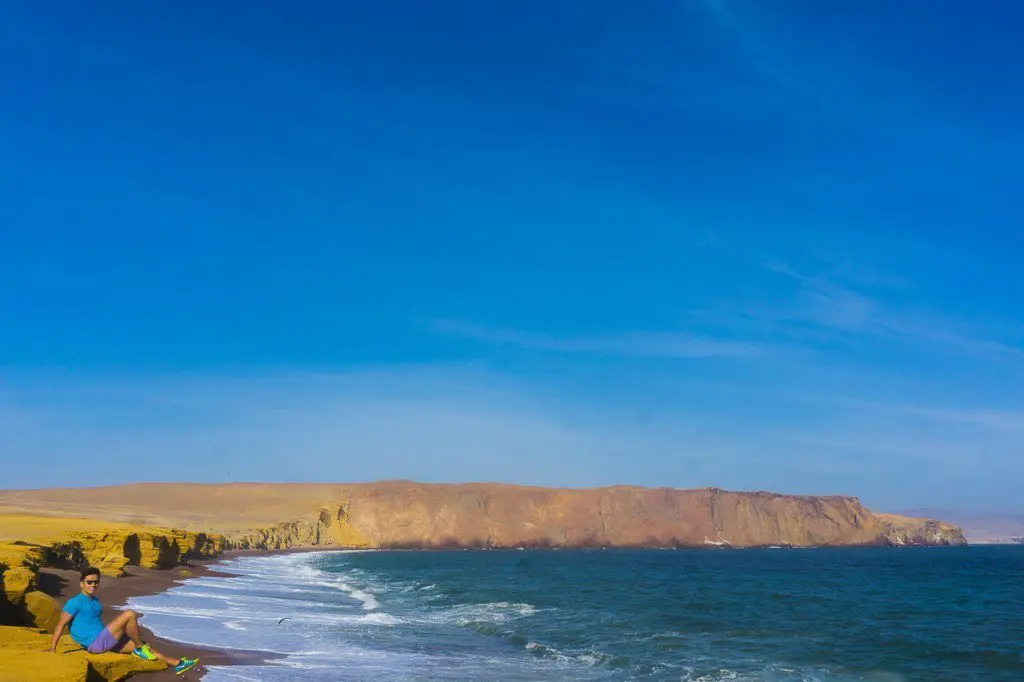
We climbed down onto the sand beach and it was as red as it appeared. The sand gets its colors from the high concentration of iron in the desert. We walked around, occasionally sprinting away from the freezing cold water that would sneak up on us.
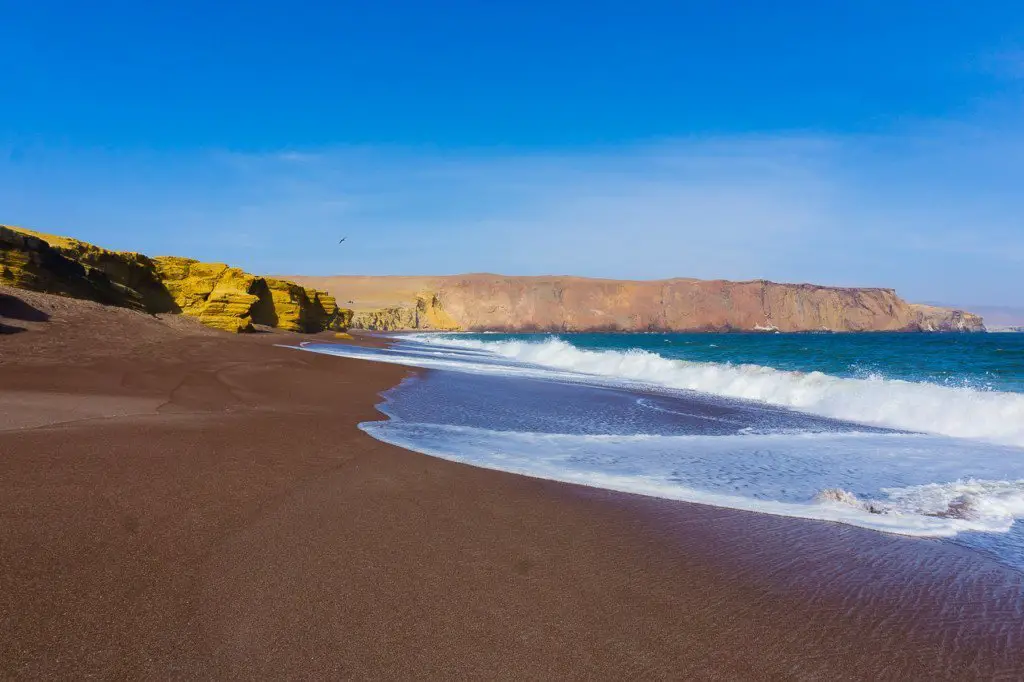


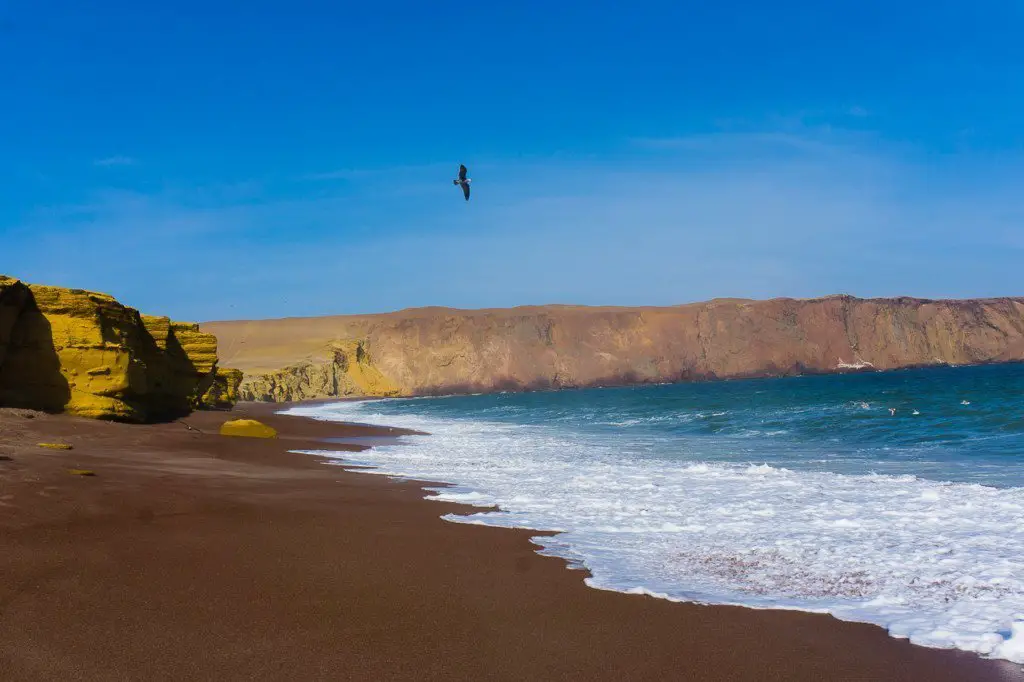
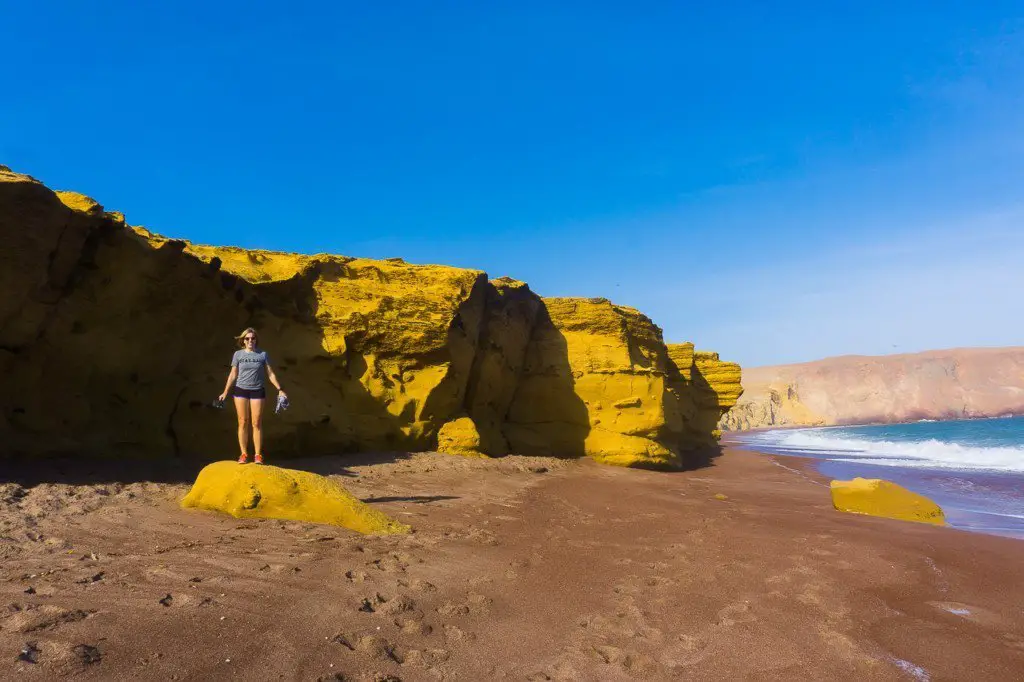
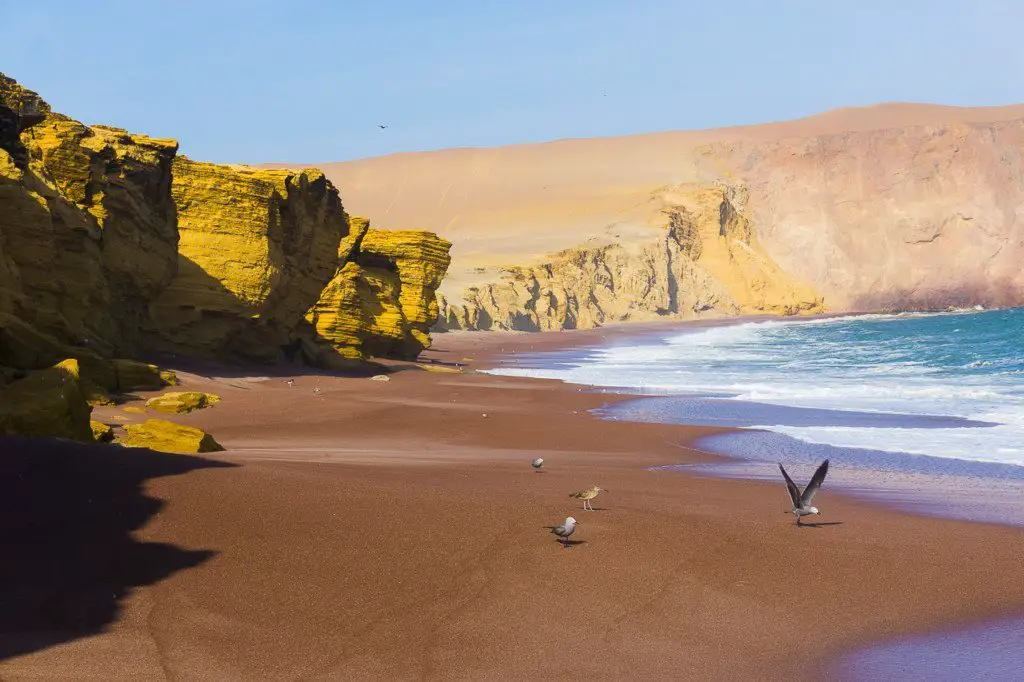
Video of Red Sand Beach
Morning tour to Isla Ballestas
Although I think the Paracas National Reserve is more unique, Isla Ballestas is probably the main attraction for visitors to Paracas. The collection of islands of the coast of Paracas houses over a million different birds, including boobies, penguins, pelicans. It’s also home to a large population of sea lions (not seals). It’s been dubbed as the poor man’s Galapagos which seems right as tours regularly leave the dock of Paracas and cost only 30 soles (~$9) for a 3 hour tour!
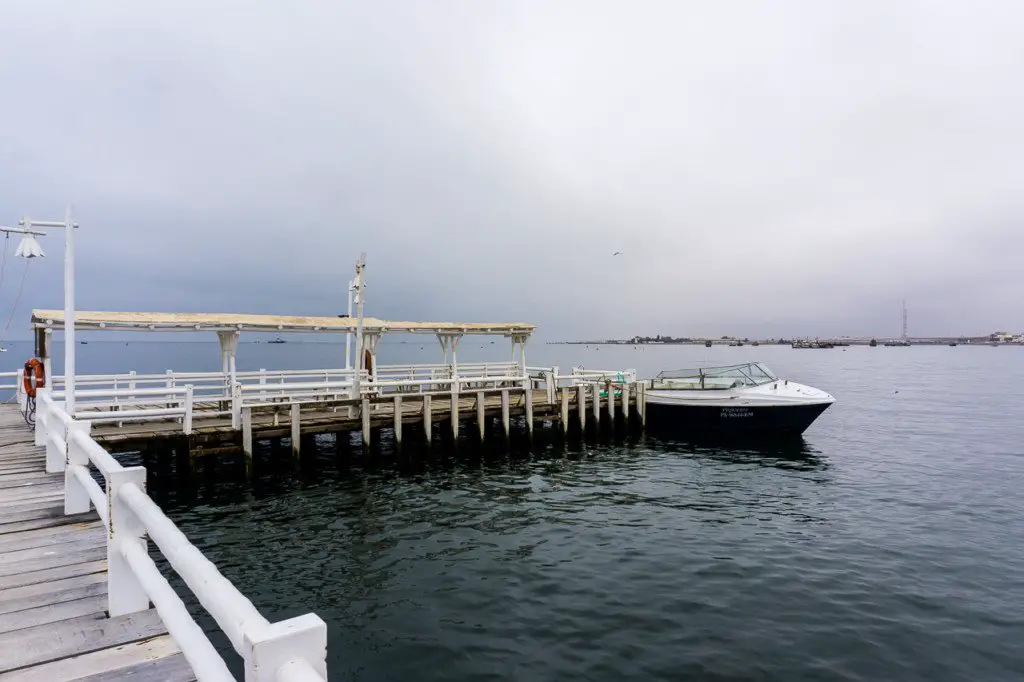
We paid a premium and booked it through our hotel which had a private dock that we left from. Turns out, all the boats and tours are the same. You’re not allowed to walk on the islands so there’s no reason to pay more than the standard 30 soles rate.

We left early in the morning, riding on the boat for almost an hour before reaching the island. Along the way, we stopped by the Paracas Candelabra, a well known prehistoric glyph. From the ocean, it looks like a Giant drew this candle-like figure into the sand. However, it’s been around for thousands of years and wind and rain have done nothing to mask it. No one knows the exact origin and various theories have surfaced through the years. This is one of many glyphs in the Paracas area, and a visit to the Nazca lines by airplane is a hugely popular tour.
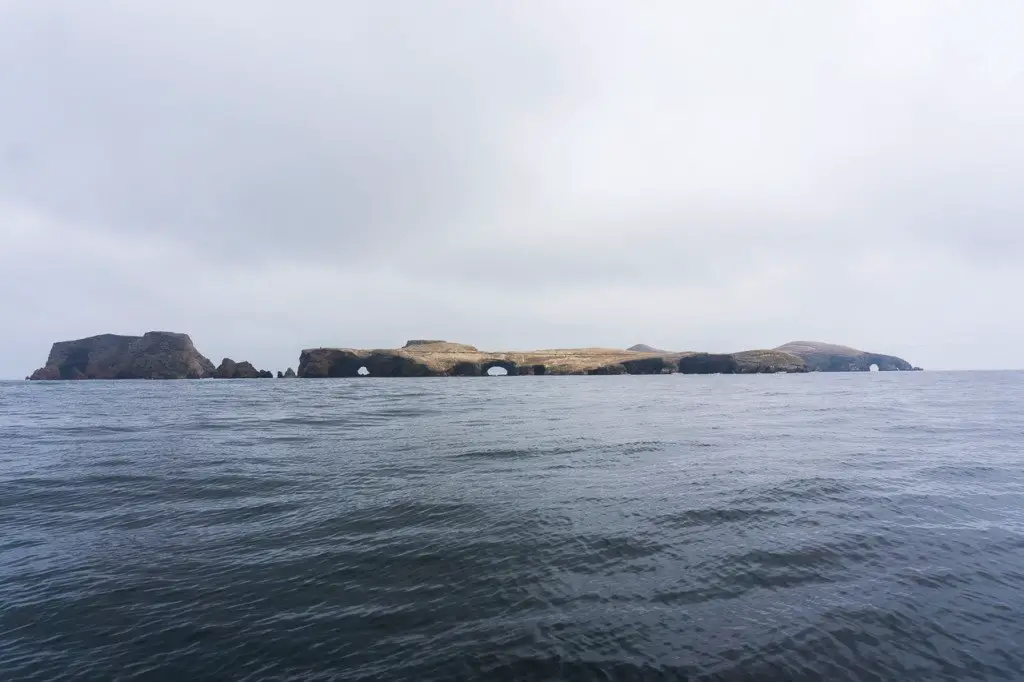

Once we got to the Isla Ballestas, we spent about 1 hour boating around the island. Yep, they weren’t lying about the abundance of avian life. Anyone with bird phobia will have their worst nightmares realized here because there are A LOT of birds. In fact, there are birds, and the smell of birds everywhere!

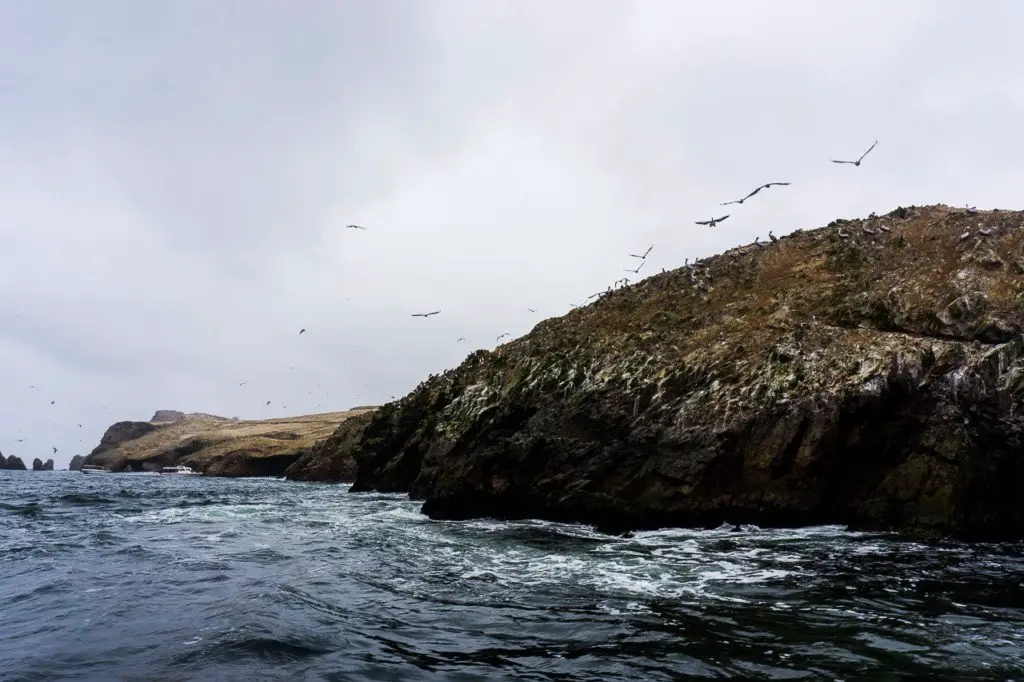
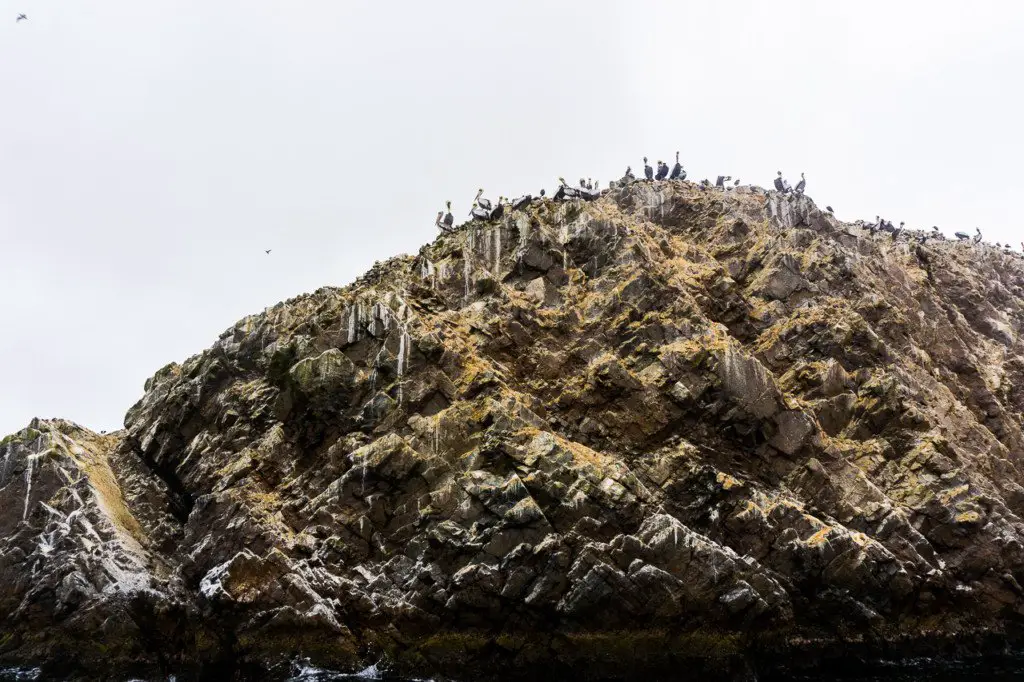


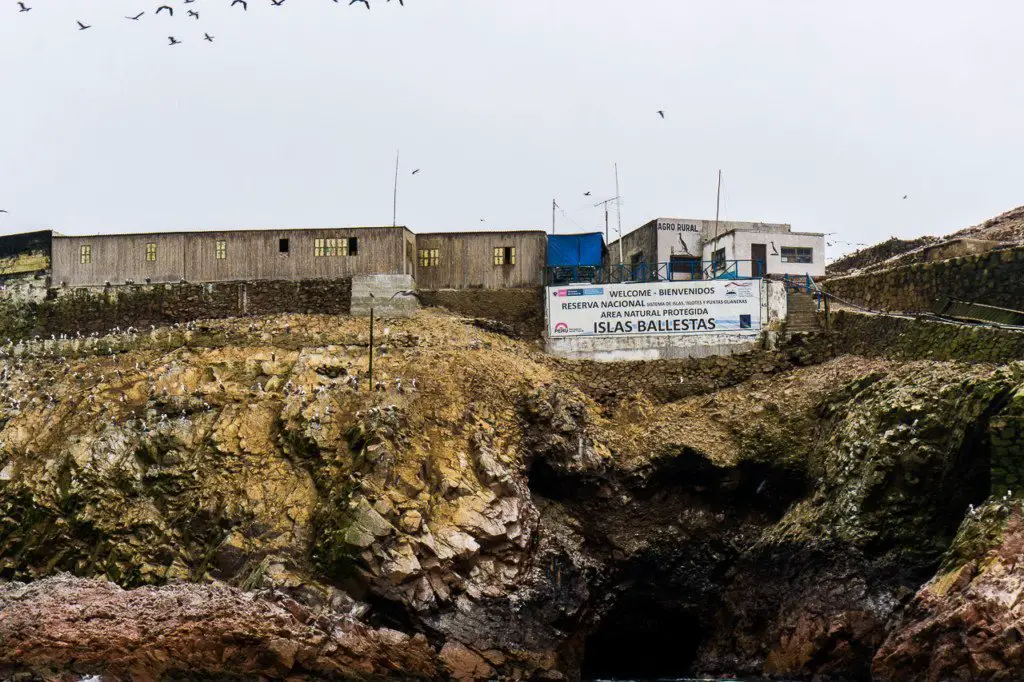
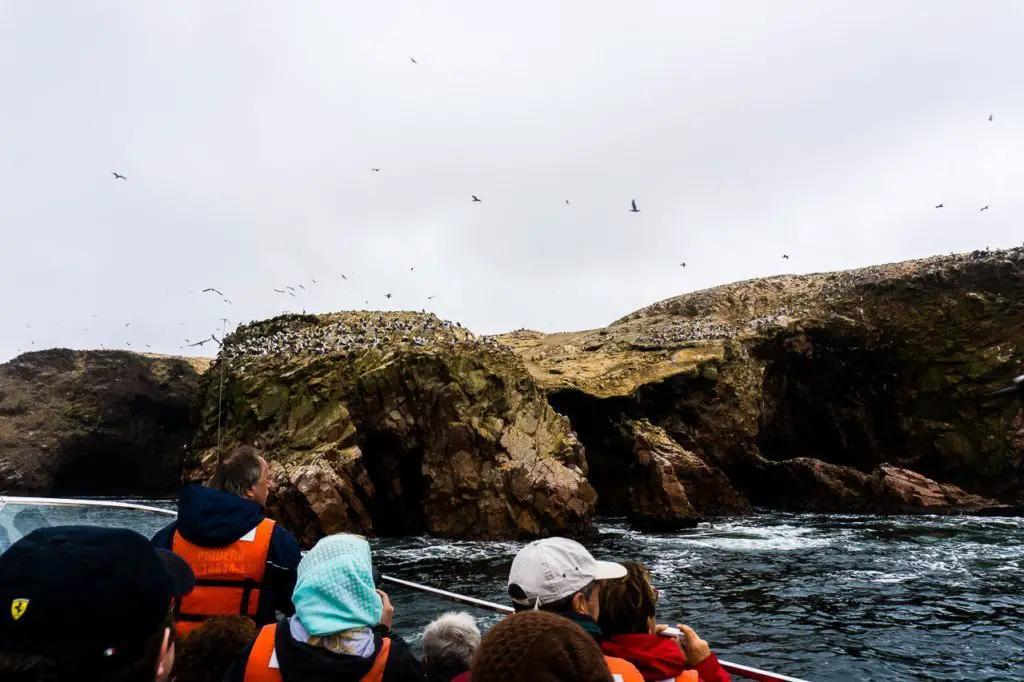

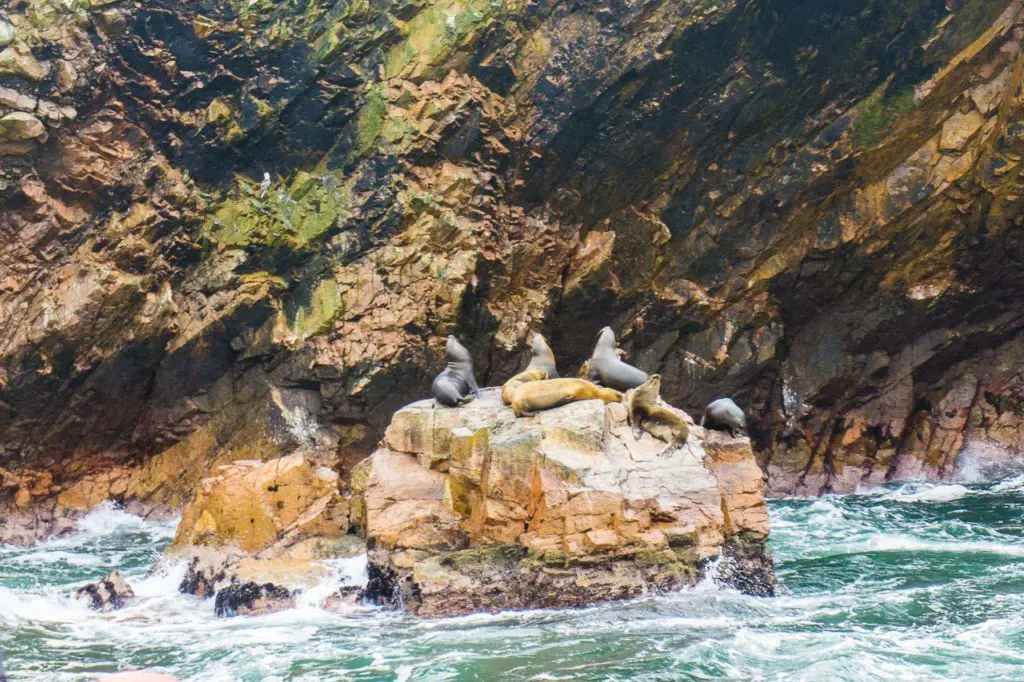
Video of Isla Ballestas
Huacachina Oasis
About 1 hour east of Paracas is the small town of Huacachina with rolling sand dunes like the Sahara. It’s easy to do a day trip to Huacachina from Paracas (and plenty more stay in Huacachina for a night or two). Read more about it on my Huacachina desert post.
Where to eat in Paracas
Being on the coast, visitors to Paracas can expect the same, high quality and fresh seafood as in Lima. I continued my seafood binge and kept up with the twice daily dose of delicious ceviche. In the central area of Paracas is a boardwalk loaded with generic, tourist centric restaurants. None looked particular appealing and after speaking with our hotel concierge, the only restaurants he recommended in town were two Italian restaurants. Perhaps he was just promoting the hotel, but tripadvisor actually ranked the two restaurants at our hotel at the top so we decided to stick with what was good.
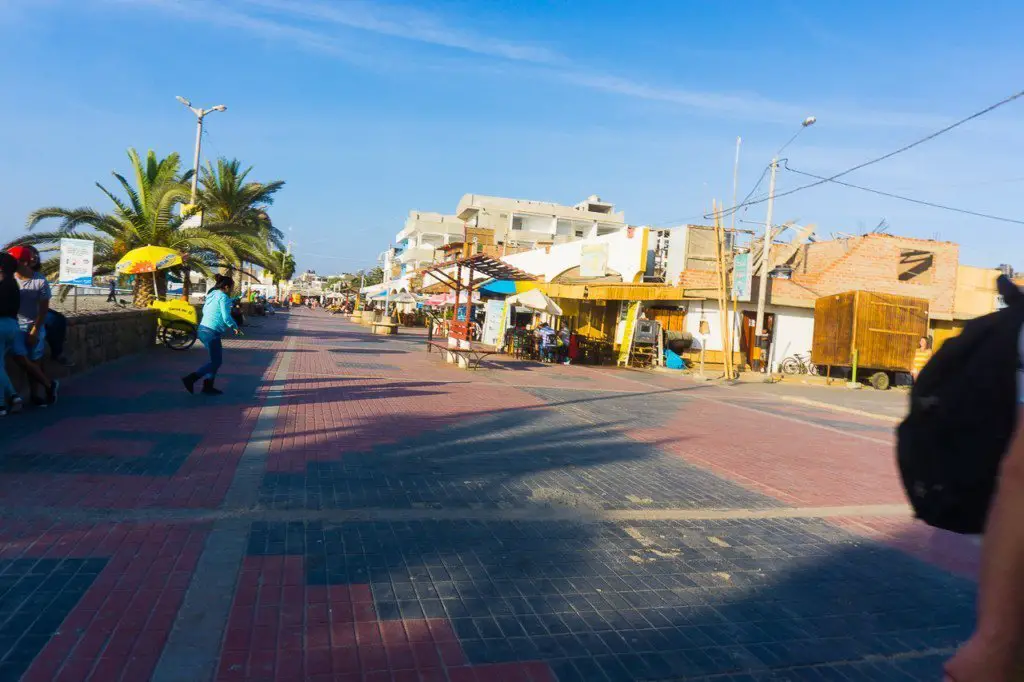
Chalana
Mind blown. This place had some of the best ceviche I had in Peru. Located at the end of the Hotel Paracas dock about 100m into the ocean, this place served ultra fresh seafood with a view. It’s open for lunch only and open to hotel and non hotel guests.
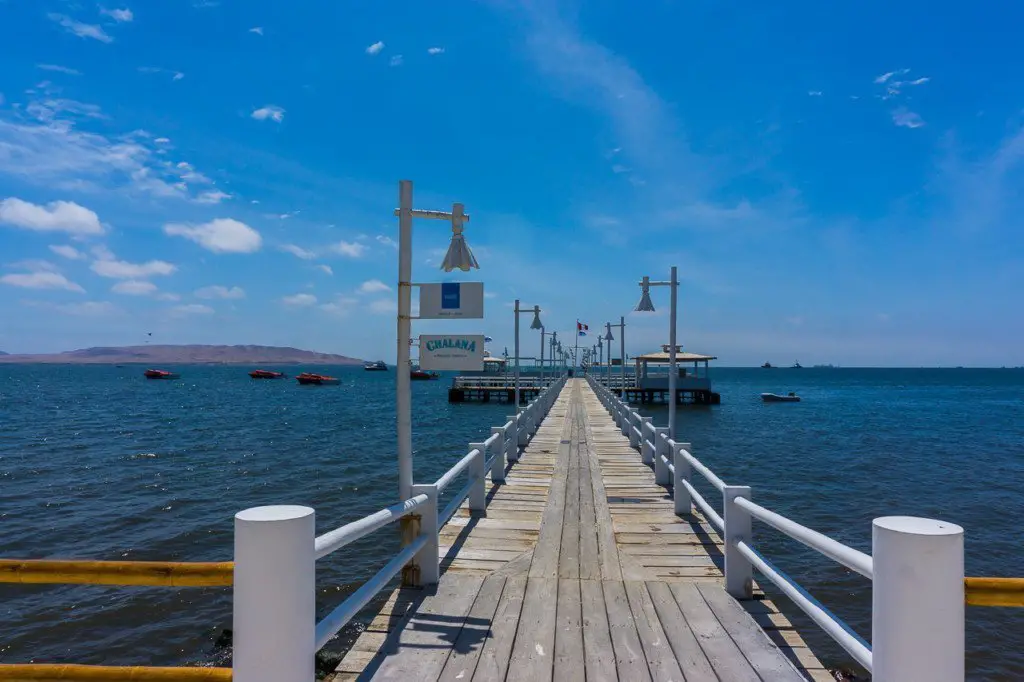
The decor of the whole place is befitting of its maritime theme and got me in the mood to devour seafood en masse. The fish being served at Chalana are supplied daily by the fisherman who also supply the hotel.
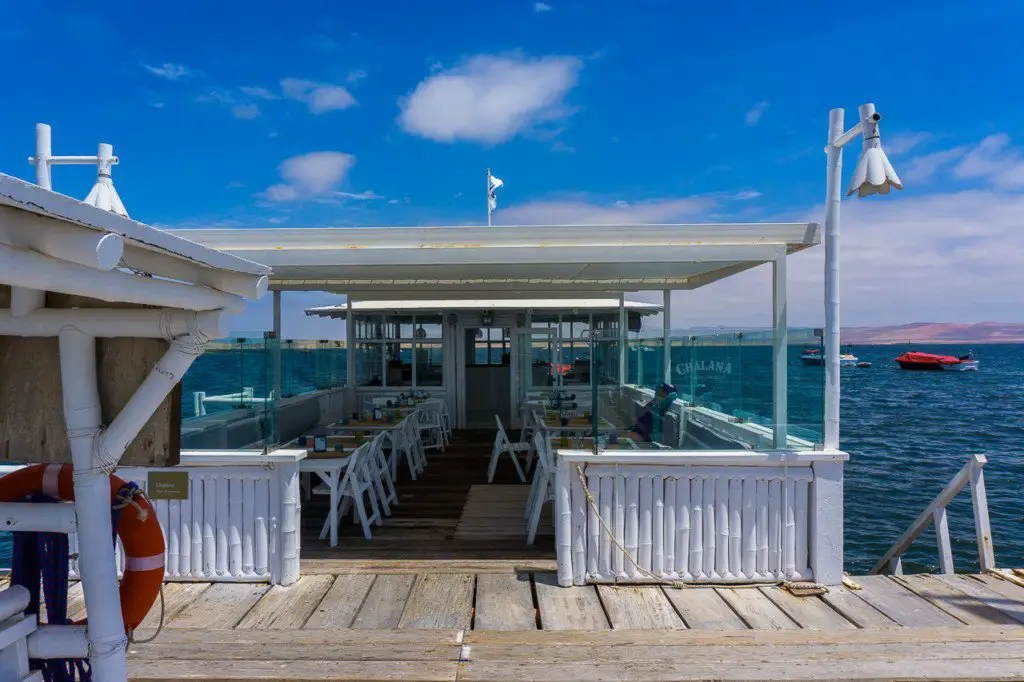
We were the only diners that day and I spent most of my time looking at the chef making the food. Ceviche is not the easiest of things to make as we watched him cut the raw seabass with precision, marinating it in lime, chiles, onions, coriander, garlic and special seasoning for 5 minutes. He topped it off with the leche de tigre, or the ceviche juice that adds that sour yet addicting flavor of ceviche.
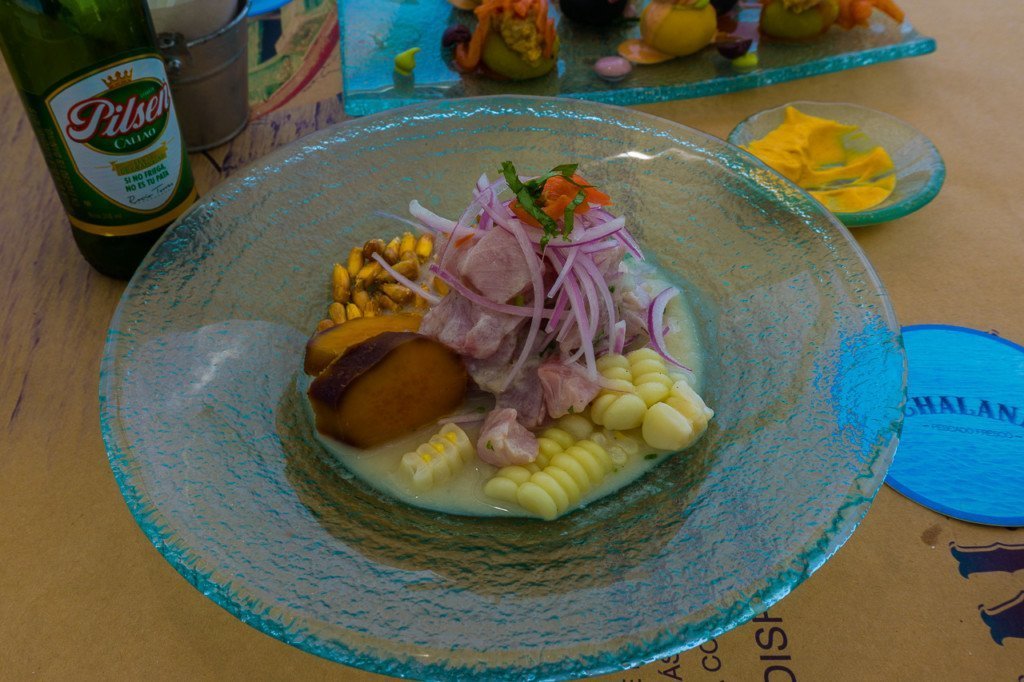

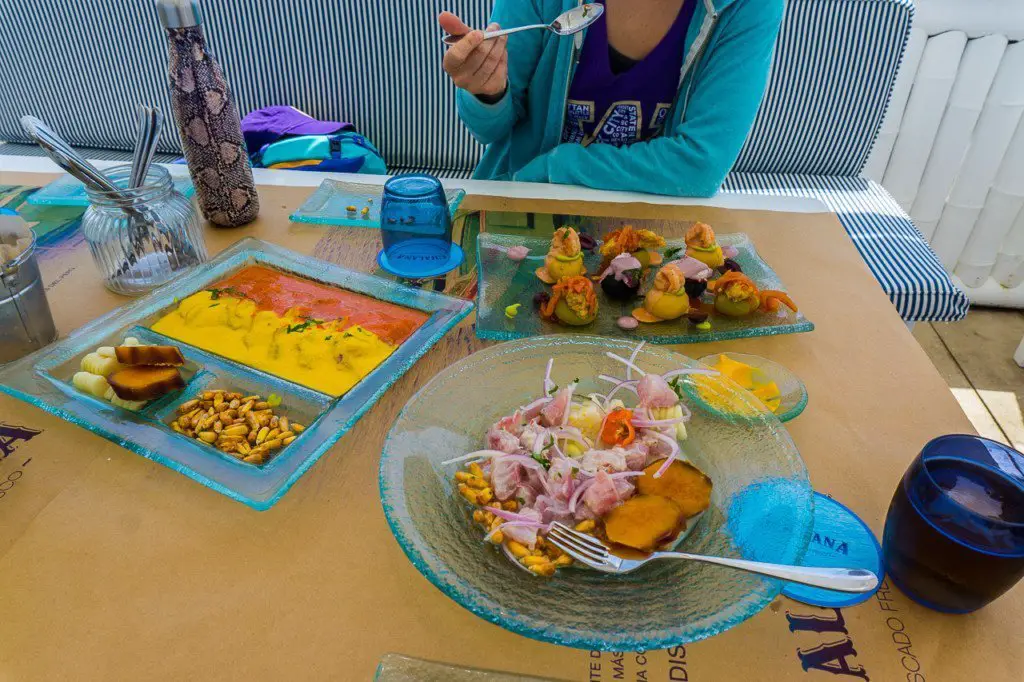
After the ceviche, we followed it up with Tiraditos, a Japanese-Peruvian fusion dish that includes a thinner slice of fish, and no onions. We followed this up with seafood causa. Everything was divine here and it certainly goes down as one of my favorite meals in Peru!
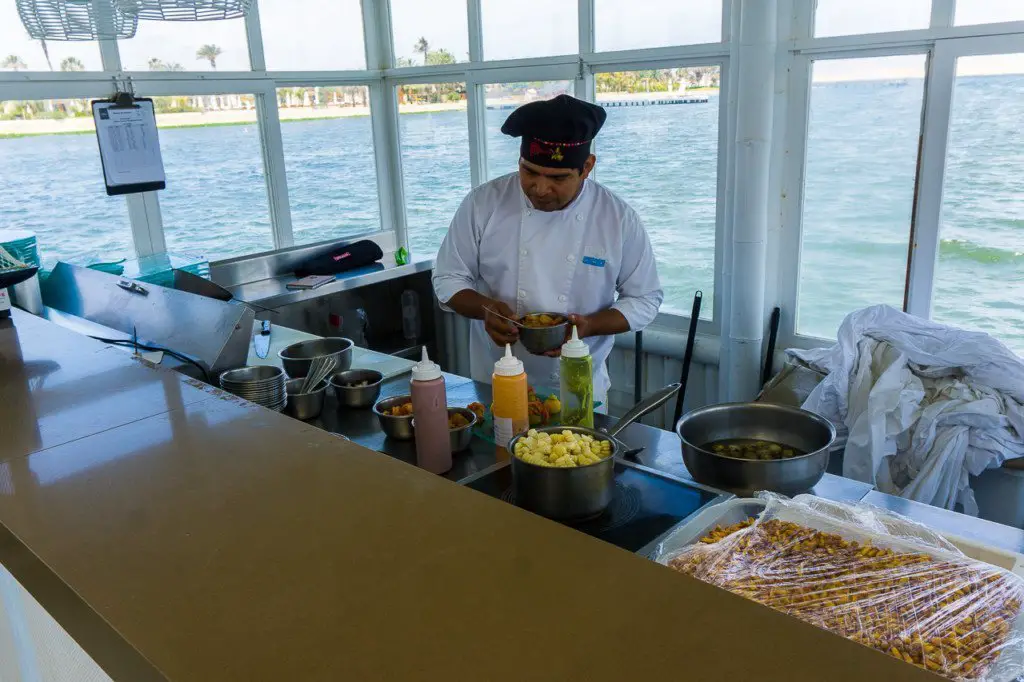
Restaurant at Hotel Paracas
I’ve never been one for upscale hotel food, but rather one that likes to mingle with the locals and eat the more adventurous stuff but most of the latter options seemed non-existent in Paracas. The food at Restaurante Ballestas is actually very good. We ate here a couple of times, starting with pisco sours (amazing), various types of ceviche and usually finishing it off with the lomo saltado. It’s very hard to go wrong with lomo saltado in Peru and this place actually made a delicious, fancier rendition. The prices are not unreasonable either for what it is.
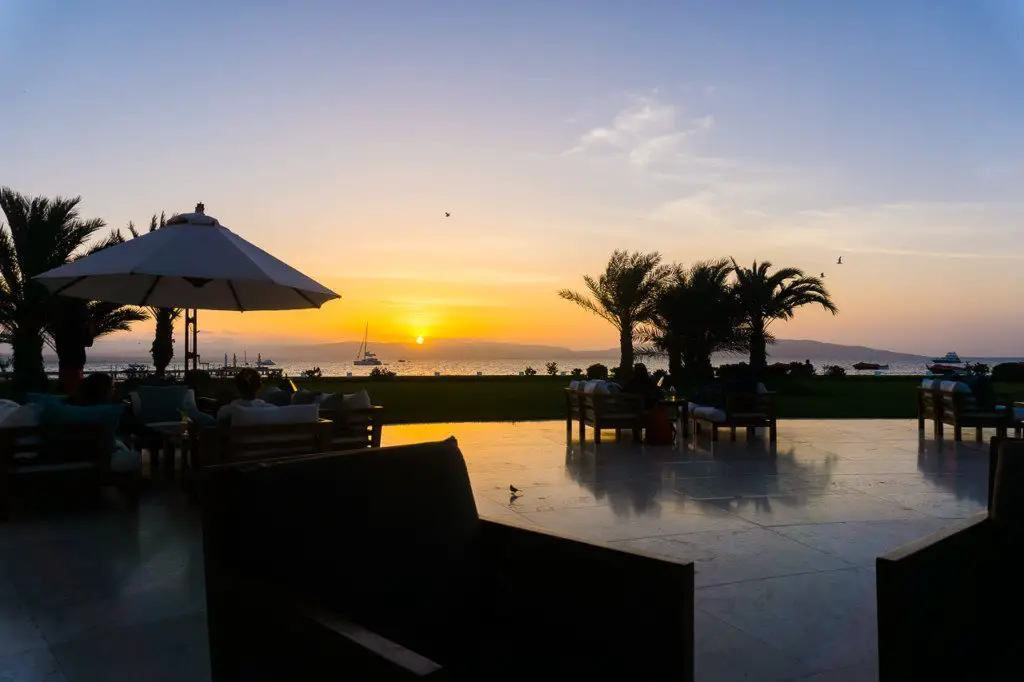

Il Covo
Having had Peruvian food for a week straight at this point, I figured it was okay to have one non-Peruvian meal. One of the restaurants recommended to me by the hotel was Il Covo, a quaint Italian restaurant that’s 10 minutes walking from the hotel.
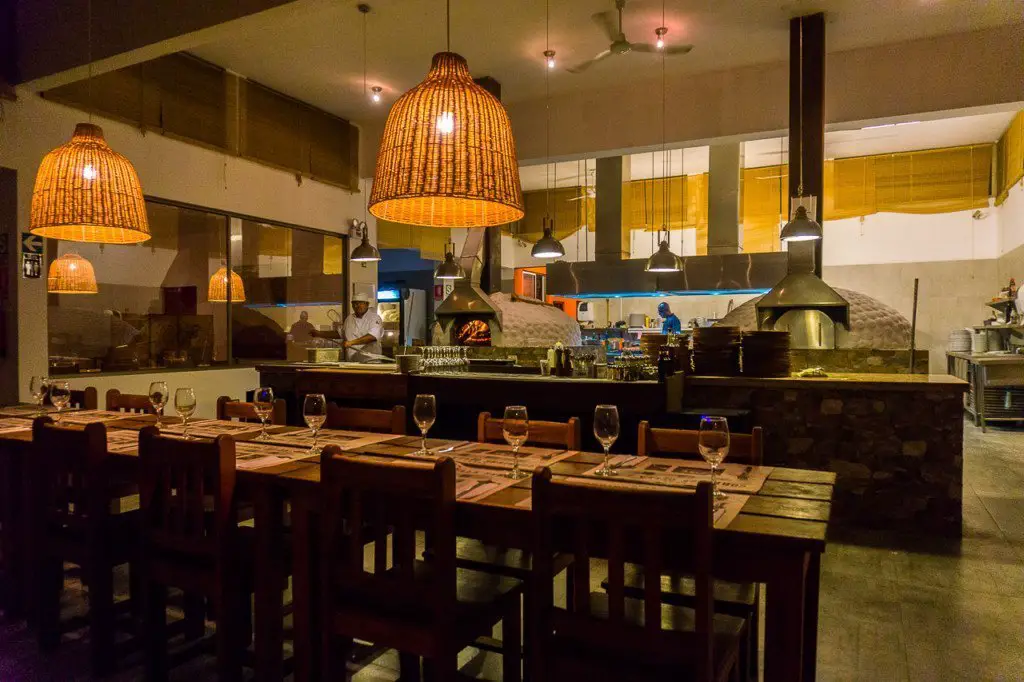
I was not disappointed. We had their house seafood risotto and a steak dish. Both were absolutely delicious. I wasn’t expecting to find top class Italian food in such a desolate place as Paracas but all my expectations were exceeded and I would highly recommend this place for anyone looking to mix it up from the local (still delicious) cuisine.

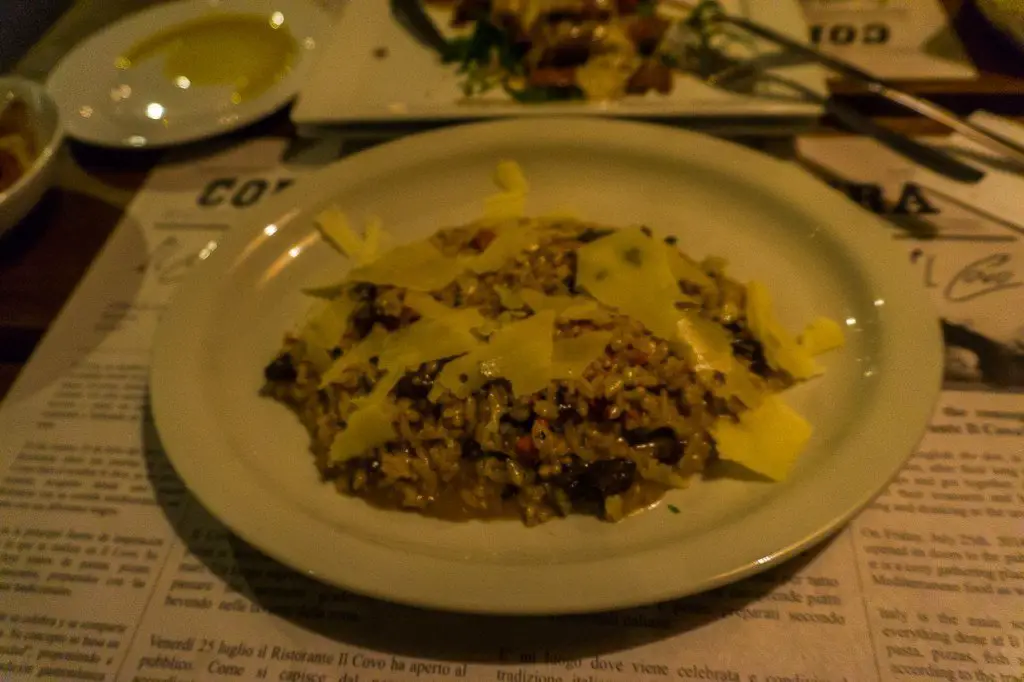





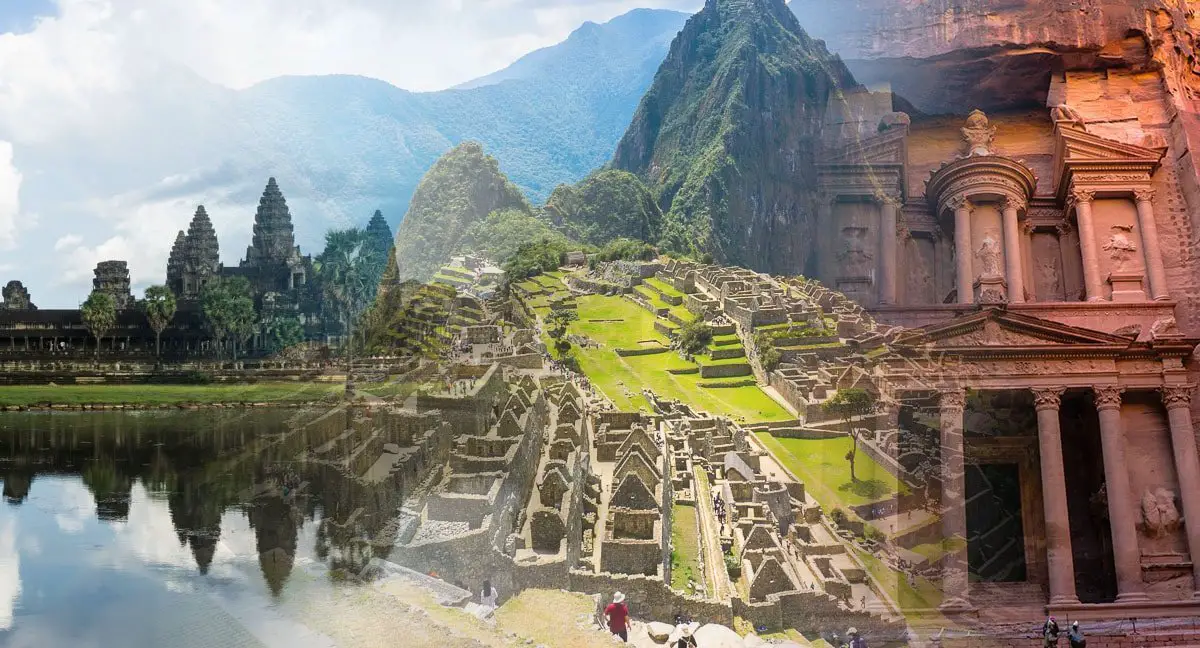

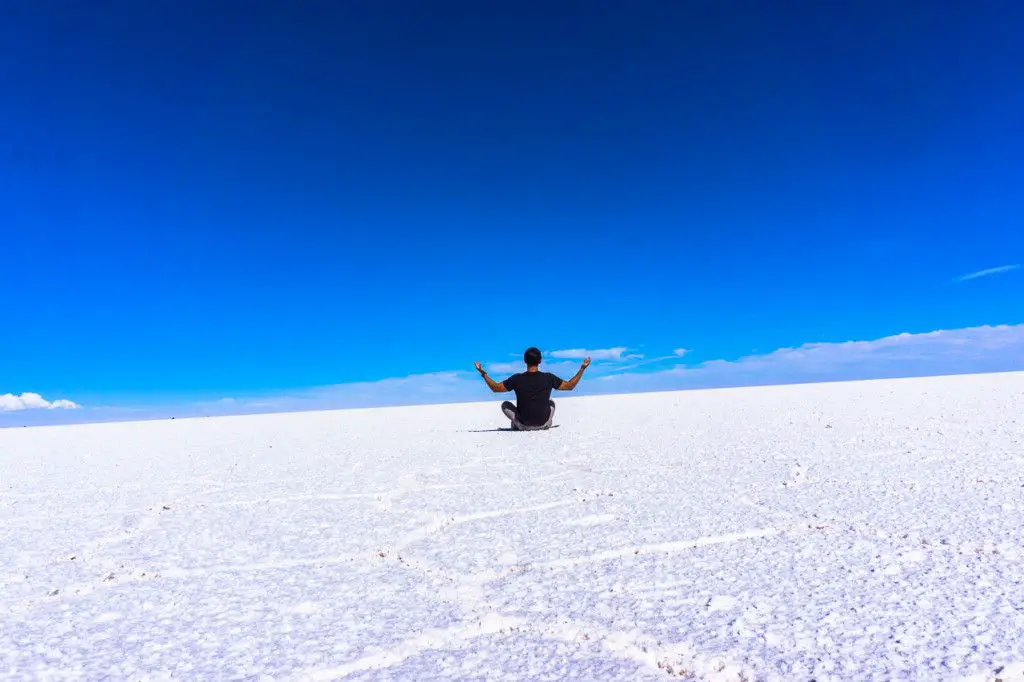
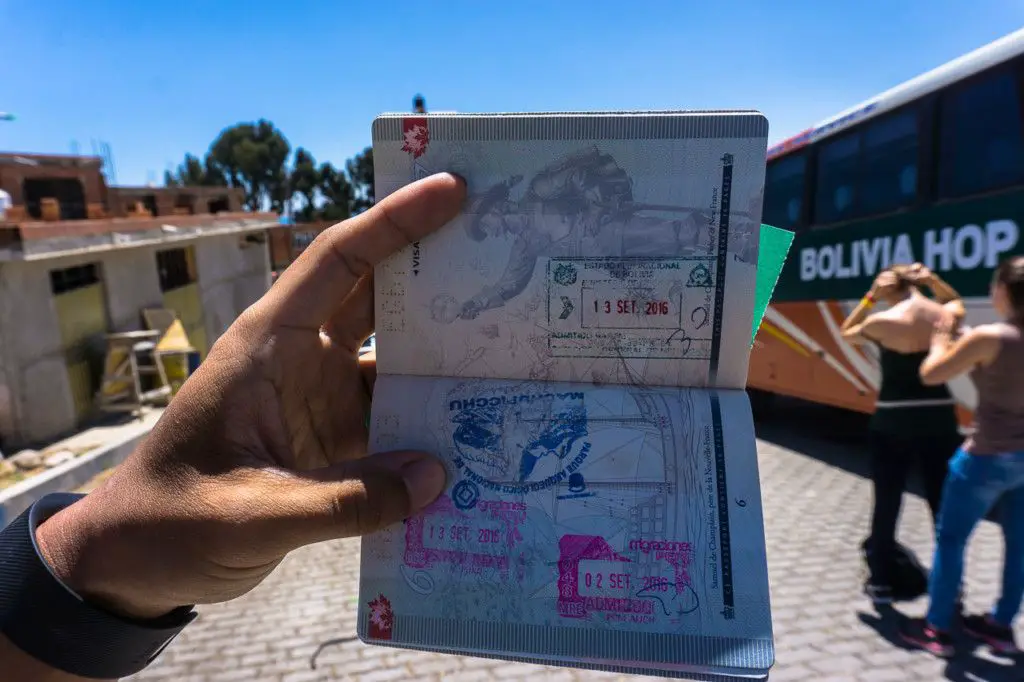

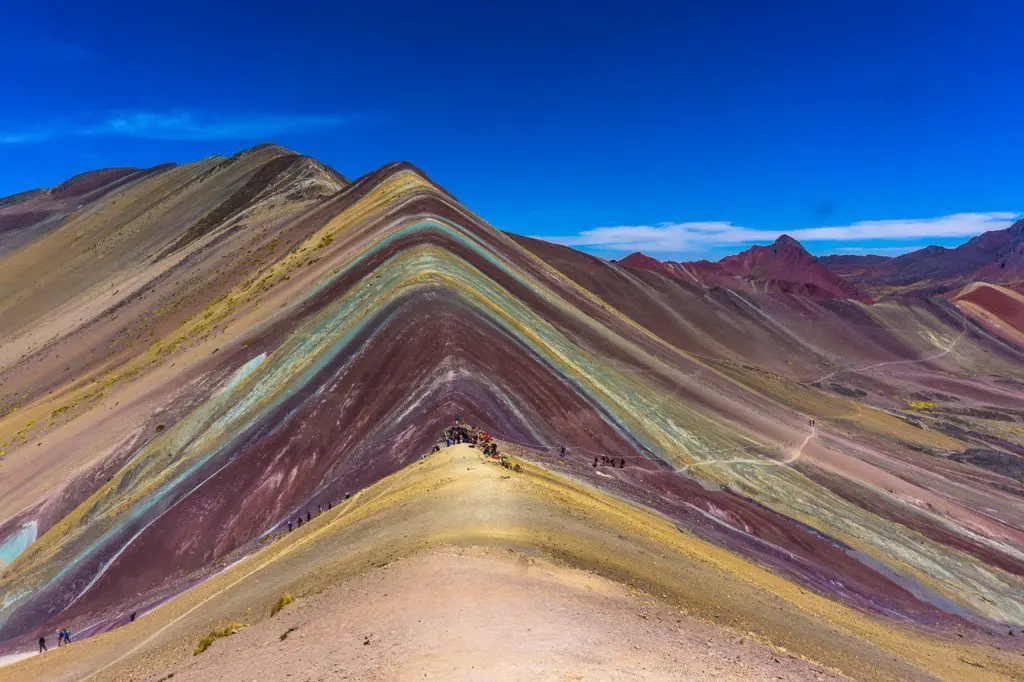
Hi Johnny,
Firstly, GREAT post! I found your Peru post (and your blog in general) while planning for my Peru Trip – it definitely helped shape my itinerary. I started reading your posts about other countries and will come back when I plan my next trip 🙂
Quick question- does the cruz del sur have baggage limitatons (size and weight)? I haven’t had good luck looking this up online.
Thanks!
Alice
Thanks Alice! I didn’t really notice if the cruz del sur bus had any limitations or not. We traveled with big backpacks which was fine, almost expected when they say two foreigners board the bus. I saw people with big suitcases that you’d definitely have to check on an airplane. So unless you’re planning moving from Lima to Paracas, I’d say you’re fine 🙂
Thanks, Johnny! That’s helpful. Really appreciate you taking the time to respond 🙂
Great posts about Peru! We’ve been using them to make some of our itinerary decisions. Which company did you do the ATV tour with and was it through the hotel or street bargaining?
Hi asmita, we had our hotel hook us up with a driver for the day and he drove us to huacachina and a winery for the day. Once in huacachina, there are MANY outfits that offer tours and they’re pretty much all priced the same and offer the same itinerary. The driver knew some guys there so he just took us to his friends shop. Have fun!